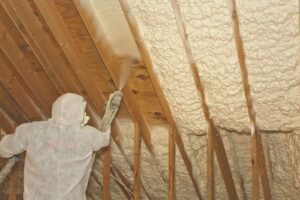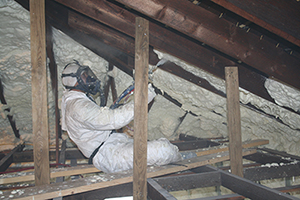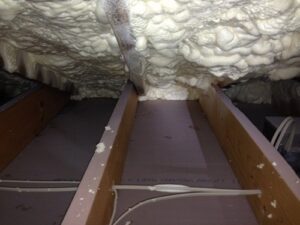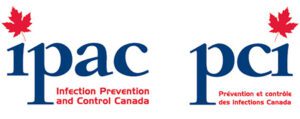Spray foam is not the right option to deal with mold contamination.
Spray foam is not the right option to deal with mold contamination.




Application on mold treated surface Application on untreated surfaces
Spray Foam Issues
Spray foam is not the right option to deal with mold contamination in your attic of wall cavities of your home. A number of people have mentioned over the years that they’ve read a number of articles about leaving mold in place and just spray foaming over the mold as a way of saving money. How do you know if you have mold in your attic? See our link here, https://mapleleafmold.ca/is-mold-in-your-attic/
While there are many benefits to spray foam insulation there is a bit of a misunderstanding when it comes to spray foam, mold contamination and how spray foam will perform;
- First of all, by using spray foam insulation you will be reducing the ability of your home to breathe. Spray foam does such a good job at creating an air tight environment inside an attic that moisture and condensation issues often arise, (see the photo below for reference). When you have moisture in a warm environment you tend to see mold problems so if you’re going to use spray foam as an insulator make sure you add an HRV unit, (a Heat Recovery Unit), This is a way of exchanging indoor air with fresh exterior air at a minimal heat loss. Some HRV systems are better than others so please do your homework to find the one that is best suited to your home and will meet your goals.
- Misrepresentation of the spray foam insulation products used – Since there are dozens of brands of spray foam insulation available, it is important to make sure you are getting what you want and what you paid for. For example, the name Icynene has become a synonym for the term “spray foam insulation” with builders, architects, and homeowners alike since the company developed modern open cell spray foam in the 1980s. The problems include lack of adhesion to the cavity the foam is sprayed in and moisture management issues that can create mold and mildew have occurred because an imitation product was falsely represented, according to Icynene.
- Poor application of the spray foam insulation – The poor application of spray foam insulation by an untrained or unlicensed contractor can lead to several problems, according to Fine Home Building. Poor application includes off-ratio spraying of the material, bad odours, and the lack of adhesion.The spray foam insulation installers rush the job, missing spots and leaving gaps. When there are gaps in your insulation coverage it will reduce the efficiency of the spray foam insulation. It will also make your home less comfortable and will not help to reduce your monthly energy bills.
- Installers try to install the product too quickly – Different from being hasty and missing areas, a contractor may try to apply a closed cell spray foam at too high a thickness. If the foam isn’t applied at the correct rate or thickness, the contractor will need to touch up spaces. A permanent odor can also be created when this happens. The reason this occurs is because the chemicals in the spray foam get too hot and a permanent odor is created. This is due to the chemicals not having time to cool before more material was applied.The spray foam insulation isn’t installed at a thickness that creates an air barrier. Spray foam insulation will create an air barrier that will keep your home warm in the winter and cool in the summer if it is applied correctly. If that air barrier isn’t created and air movement is allowed in your home, your AC unit and furnace will be working overtime as you attempt to keep your home comfortable. This will also lead to higher energy bills.
- Spray foam insulation chemicals weren’t mixed properly – If the chemicals in the spray foam aren’t mixed properly it can cause the insulation material to pull away from the cavity where it has been applied. When this happens, an air barrier is not created, thus cool air will still be able to move around the insulation which will make your home uncomfortable. This can also lead to high energy bills as your appliances work overtime in an attempt to heat or cool your home.
- Spray foam has an odor and off-gassing – All spray foams have an odor at the very least during the installation process. The problem lies in how the contractor handles the odor. Some odors only last for maybe an hour or two, while others can last much longer if the space to be insulated isn’t well ventilated. Another issue is potential off-gassing that can cause breathing problems or other adverse health effects, according to the Environmental Protection Agency. While all spray foams have an odor, not all have issues with off-gassing.
- Correct installation of spray foam is critical, (See Spray foam can make some homes unlivable https://www.cbc.ca/news/spray-foam-insulation-can-make-some-homes-unlivable-1.2224287
- The Green Building Advisor also indicates in a recent article that installation of spray foam products can lead to cases of roof sheathing becoming so damp that mold will start to grow, worsening your indoor air quality, (https://www.greenbuildingadvisor.com/article/open-cell-spray-foam-and-damp-roof-sheathing
- Also from the Green Building Advisor https://www.greenbuildingadvisor.com/article/spray-foam-insulation-is-not-a-magic-bullet
- Why you shouldn’t choose spray foam insulation over fibreglas, https://www.treehugger.com/green-architecture/why-you-shouldnt-choose-spray-foam-insulation-over-fiberglass.html
- Maple Leaf Mold Inc does not recommend the installation of spray foam insulation in any home, regardless of whether or not you have a mold contamination issue. The risks are too high at this point and the potential for issues now and in the future outweigh any cost savings.


Factors that Encourage Mold Growth on or in Foam Insulation
While the chemistry of all foam insulating products is probably not highly conducive to mold growth (neither is fiberglass insulation) we will find mold growth on these insulating products when any of the following are present:
- When there is moisture present in or on the insulating material
- Spray foam insulation will sometimes have gaps that will allow air leaks – we warn about inexpert application of spray foam that leaves gaps, holes, air leaks.Building air movement through such openings may bring moisture as well as organic dust that invite mold growth.
- Mold needs moisture, warmth and organic material to grow – possibly simple house dust (dominated by fabric fibres and skin cells) on the surface of the insulation – something the particular mold genera likes to eat is enough to initiate mold growth
- There is another, more-significant mold reservoir in the building.We have found, in particular, surprising levels of mold contamination on and in fiberglas insulation and more rarely on foam insulation, when there was already a high level of airborne mold in a building.We have measured very high levels of airborne problematic mold spores which were traced to a building reservoir of moldy fiberglas insulation.


Maple Leaf Mold Inc. is a certified mold / asbestos removal and biological disinfection / air analysis company located in Toronto that uses certified IICRC technicians for all testing and remediation projects.
We are a professionally licensed firm experienced in testing, verifying and removing Mold / Asbestos / Lead and other environmental contaminants as well as providing disinfection services to control and kill biological contaminants.
Call 416-254-7256 to talk with us about your issue anytime.






